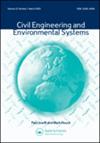规划适应:确定灾害应对规划中的关键决策驱动因素
IF 1.1
3区 工程技术
Q3 ENGINEERING, CIVIL
引用次数: 3
摘要
传统的灾害响应计划正在努力适应日益复杂、独特和不确定的灾害影响。深度不确定性下的决策建议考虑决策触发点和自适应过程,以制定灵活应对任何即将到来的挑战的计划。这里考察了两种灾害响应规划情况:灾害废物管理和火山爆发清理。根据我们如何使用自适应过程来制定针对关键决策驱动因素的灵活计划,对这两种方法进行了检查。所制定的指标表明,围绕以危险为中心的驱动因素(地震震动程度、火山灰深度)和以影响为导向的描述因素(流离失所人数、废物危害)制定的计划提供了若干好处。将面向影响的描述符的开发与情景发现和情景规划相结合,将有助于灾害规划人员识别可构建到规划过程中的关键决策、决策标准和触发器。本文章由计算机程序翻译,如有差异,请以英文原文为准。
Planning to adapt: identifying key decision drivers in disaster response planning
ABSTRACT Traditional disaster response plans are struggling to adapt to the increasingly complex, unique, and uncertain disaster impacts. Decision-making under deep uncertainty suggests the consideration of decision trigger points and adaptive processes to develop plans that are flexible for any oncoming challenge. Two disaster response planning situations are examined here: disaster waste management, and volcanic eruption clean-up. Both of these are examined in terms of how we can use adaptive processes to develop flexible plans oriented around key decision drivers. The indicators developed show that orienting plans around both hazard-centric drivers (level of earthquake shaking, ashfall depth) and impact-oriented descriptors (number of displaced people, hazard of waste) offer several benefits. Coupling the development of impact-oriented descriptors with scenario discovery and scenario planning will help disaster planners to identify key decisions, decision criteria and triggers that can be built into the planning process.
求助全文
通过发布文献求助,成功后即可免费获取论文全文。
去求助
来源期刊

Civil Engineering and Environmental Systems
工程技术-工程:土木
CiteScore
3.30
自引率
16.70%
发文量
10
审稿时长
>12 weeks
期刊介绍:
Civil Engineering and Environmental Systems is devoted to the advancement of systems thinking and systems techniques throughout systems engineering, environmental engineering decision-making, and engineering management. We do this by publishing the practical applications and developments of "hard" and "soft" systems techniques and thinking.
Submissions that allow for better analysis of civil engineering and environmental systems might look at:
-Civil Engineering optimization
-Risk assessment in engineering
-Civil engineering decision analysis
-System identification in engineering
-Civil engineering numerical simulation
-Uncertainty modelling in engineering
-Qualitative modelling of complex engineering systems
 求助内容:
求助内容: 应助结果提醒方式:
应助结果提醒方式:


